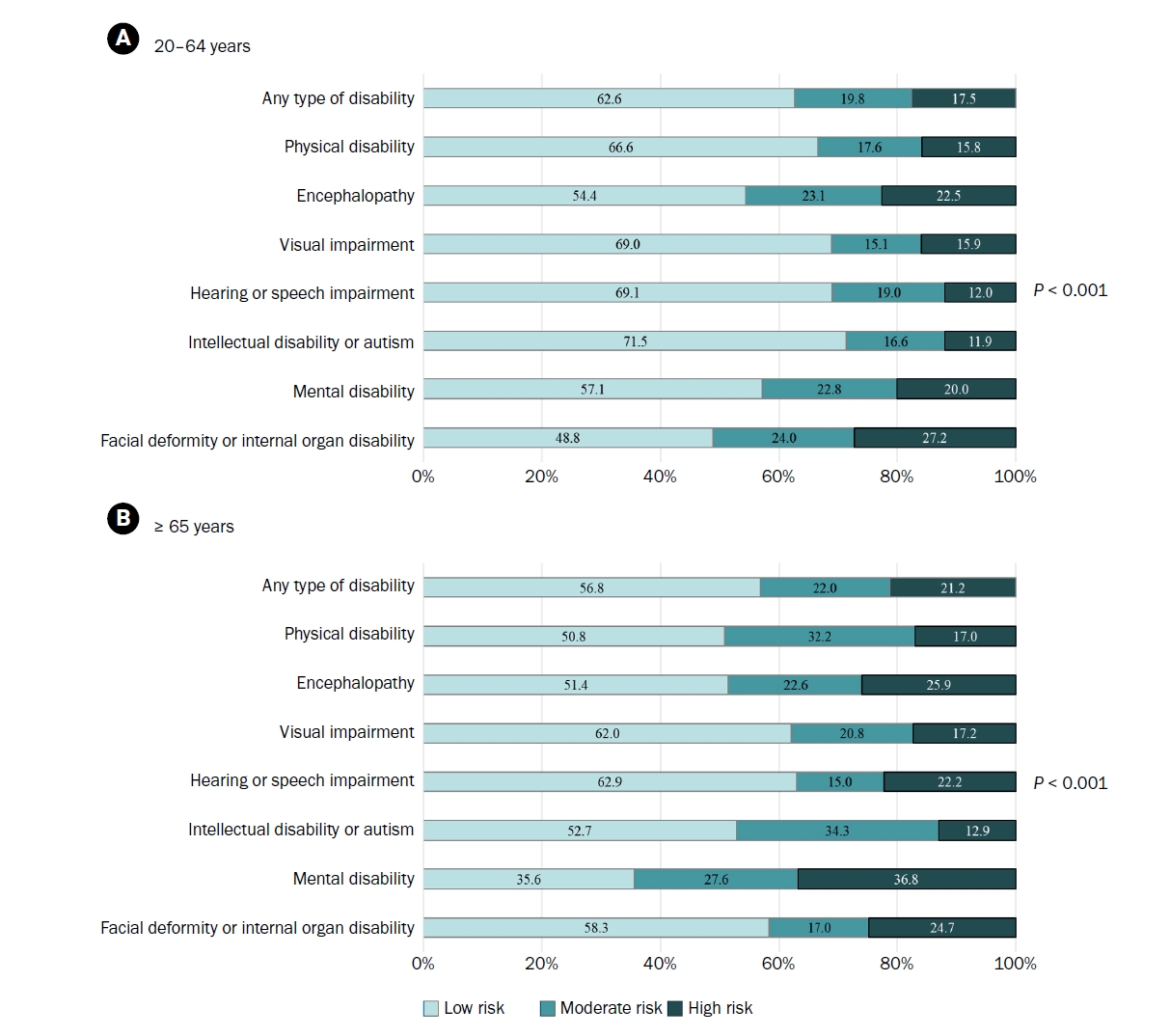Search
- Page Path
- HOME > Search
Research Article
- [Korean]
- Factors associated with nutritional risk among disabled persons in the Republic of Korea: a cross-sectional study using 2020 Disability and Life Dynamics Panel
- Seong-Ah Kim, Seul Ki Choi
- Korean J Community Nutr 2025;30(5):364-375. Published online October 31, 2025
- DOI: https://doi.org/10.5720/kjcn.2025.00262

-
 Abstract
Abstract
 PDF
PDF - Objectives
Persons with disabilities face heightened nutritional risks due to barriers in dietary management, yet research remains limited. This study examined the nutritional health status and associated risk factors among disabled adults in Korea.
Methods
Data were drawn from the 2020 Disability and Life Dynamics Panel, a nationally representative survey of registered disabled Koreans aged ≥ 20 years. Nutritional health was assessed using the Nutrition Screening Initiative checklist and categorized as low, moderate, or high risk. Multivariate multinomial logistic regression was applied to identify predictors of nutritional risk.
Results
Among adults with disabilities aged 20–64 years, the prevalence of low, moderate, and high nutritional risk was 62.6%, 19.8%, and 17.5%, respectively. In the ≥ 65 years group, the distribution was 56.8% (low), 22.0% (moderate), and 21.2% (high). Moderate to high nutritional risk was most prevalent among individuals with facial deformity or internal organ disability (51.2%) in the 20–64 years group, and those with mental disabilities (61.7%) in the ≥ 65 years group. Significant predictors of high nutritional risk included living alone, lowest income quartile, chronic disease, depressive symptoms, and perceived underweight for both age groups. Compared with visual or speech impairments, facial deformity or internal organ disability (in the 20–64 years group) and physical disability (in the ≥ 65 years group) were significantly associated with moderate or high nutritional risk.
Conclusion
Nearly 40% of disabled Koreans are at nutritional risk. Tailored dietary interventions that address disability type, socioeconomic status, and health conditions are required to reduce disparities in nutritional health.
- 346 View
- 16 Download


 KSCN
KSCN
 First
First Prev
Prev



